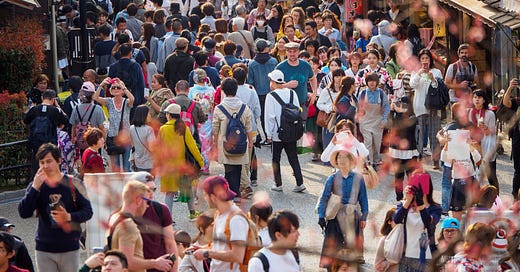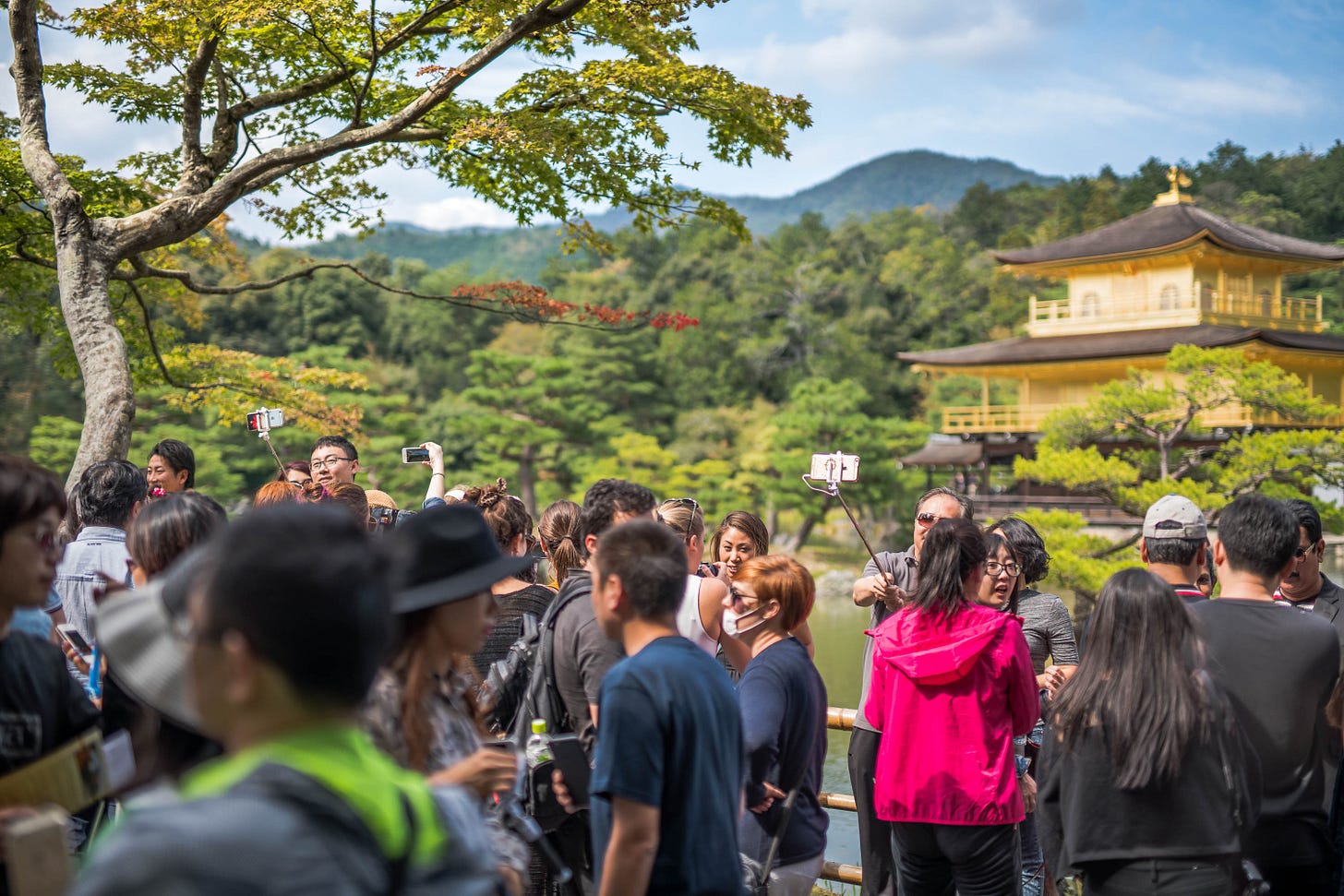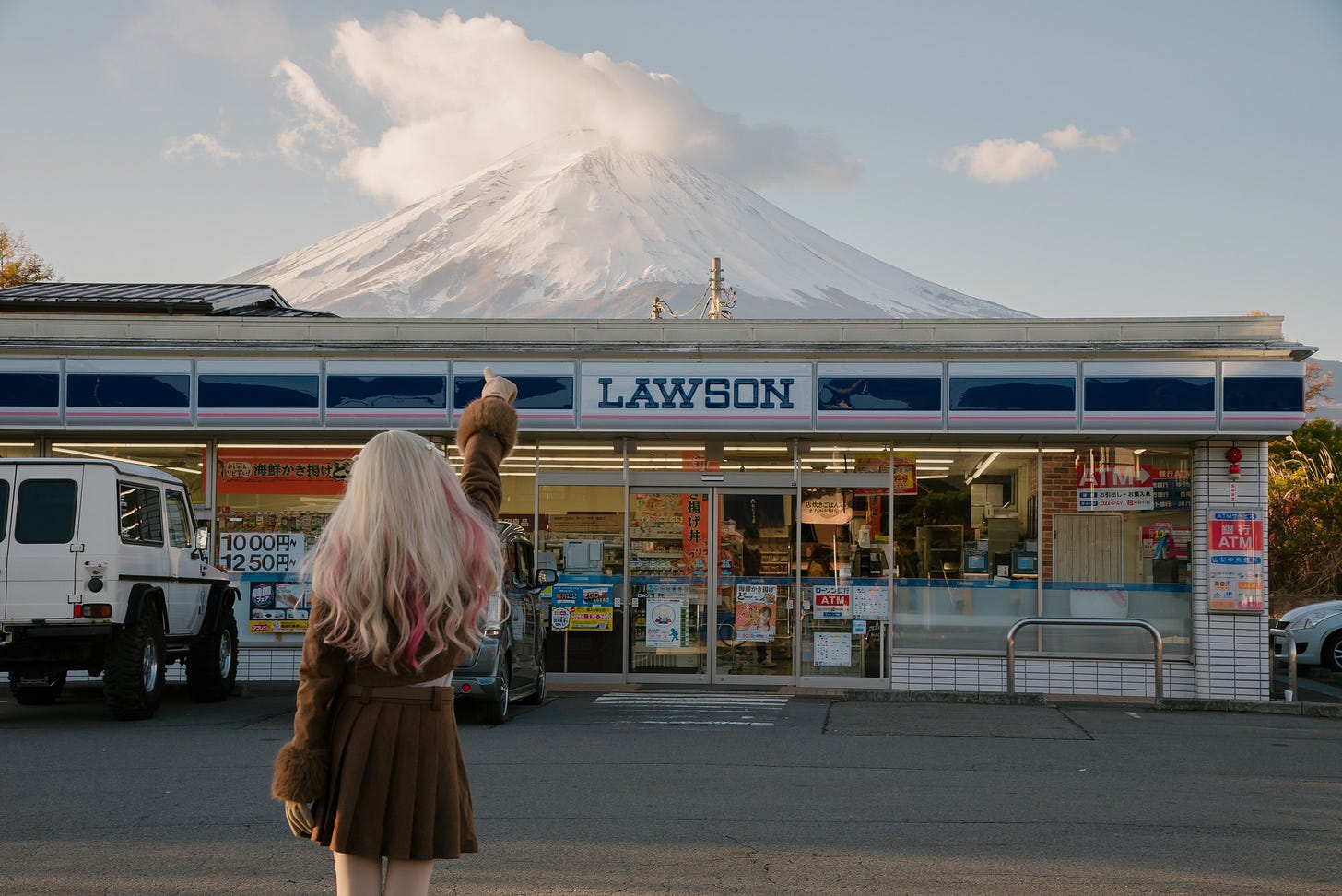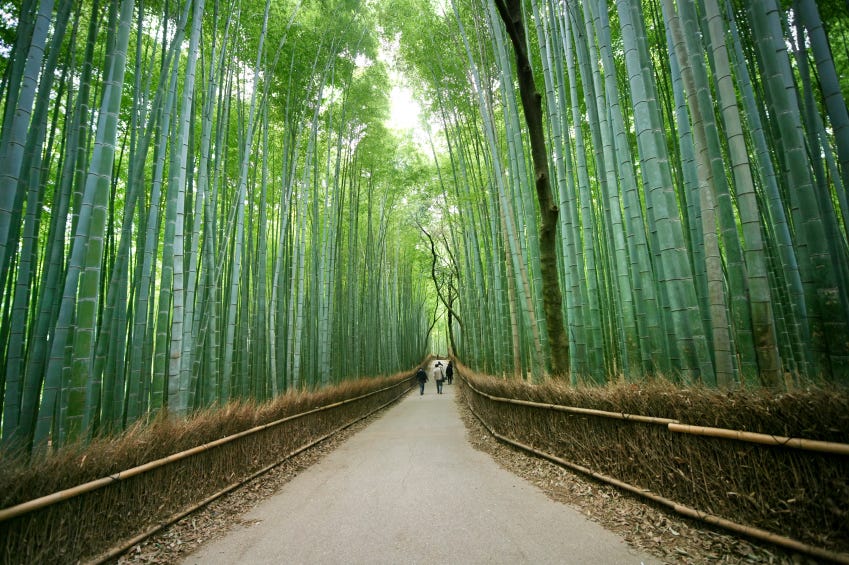We’ve been doing it all wrong. For years – decades actually – we’ve been thinking of tourism in terms of highlights and must-sees. And yes, I was part of the problem. I mean, I must have written several dozen Top Ten lists for Kyoto and Japan when I was writing for Lonely Planet.
Crowds near Kiyomizu Temple in Kyoto
But now that all of Japan’s Top Tens are literally drowning in overtourism, we can no longer ignore the foolishness of this checklist approach to tourism. The good thing is, technology has now advanced to the point where it’s possible to explore Japan in a completely different way. But before we get into that, let’s have a quick look at the problem.
Selfie sticks at Kinkaku-ji Temple in Kyoto
If you’ve been to Japan recently, you’ve probably experienced overtourism first hand. In Tokyo, if you visited Senso-ji Temple or the old Outer Market at Tsukiji, you probably encountered a crush of tourists enough to spark a panic attack. Likewise, in Kyoto, if you walked through Bamboo Alley or Nishiki Market at midday, you probably wondered if it was even safe to pack so many people into such a small area.
Nakamise Arcade at Senso-ji Temple in Tokyo
There’s no doubt that the internet and social media in particular has made things much worse. It’s a sad fact that a significant number of tourists now visit places simply to snap the all-important selfie in front of a famous sight, like the Mt Fuji Lawson.
Mt Fuji Lawson
Look, I’m not going to say that some sights aren’t worth braving the crowd for. These include some of the sites mentioned above like Arashiyama’s Bamboo Alley, as well as the torii tunnels of Fushimi-Inari Taisha and the shining hall of Kinkaku-ji (aka, The Golden Pavilion). Of course, you should see these sights. But you should see them intelligently: go early, go late, go on a weekday, go out of season, or go via a different route.
Bamboo Alley in Kyoto without crowds
But – and this is a very important But – you should not build your trip around these sights or any other collection of sights. Rather, you should completely reframe your travel goals around Japan. Stop thinking of Japan as a list of Must Sees. Forget what your friend who visited Japan said you really must see. Instead, do this:
Focus on the experience of being in Japan.
Why? Because Japan is a miracle. While many developed countries in the West are starting to fray around the edges for all kinds of reasons, Japan is a country where everything still works. It’s a country where even the most humble worker doing the most humble job still does it to the best of their ability. It’s a country where you can set your watch by the time your train departs. And it’s a country where you can expect excellent service in hotels, restaurants and shops at all budget levels. This is no ordinary thing, especially if you come from a place where the ethic seems to be “do the least you can possibly get away with.”
Shinkansen platform at Tokyo Station
If you think back to your most memorable travel experiences, you’ll probably find that the best ones did not involve a famous sight at all, but rather magical encounters with local people that you never could have planned for. And visiting Top Ten sights with a scrum of other tourists almost guarantees that you will have no meaningful encounters; all you will do is see with your own eyes something you’ve seen in a thousand pictures and videos. With that in mind, I suggest you do this:
Increase the chances for a happy accidents and interactions with local people who are not jaded by overtourism.
Hodaka-dake Sanso mountain hut in the Japan Alps
Yes, of course, you should still visit Tokyo and Kyoto, but don’t focus on the big-name spots. Instead, check out some of the lesser sights, or just choose a neighborhood and wander. Become what the French call a flâneur, that is, someone who wanders aimlessly around a city. Both Kyoto and Tokyo reward the curious flâneur with an endless array of excellent discoveries – cool little kisaten (coffee shops), local neighborhood shrines, quiet temples, peculiar shops selling inscrutable items etc.
Wandering the backstreets of Tokyo
But, more importantly, after checking out Tokyo and Kyoto, be willing to step off the beaten path. The fact is, once you get away from the “Top Ten Must Sees in Japan,” you can forget about overtourism. Indeed, you might be the only foreigner for miles around. It will literally be like stepping back to the 1980s, before Japan morphed into a tourism superpower.
Ohara Village in the mountains north of Kyoto
Now here’s the technology piece I alluded to earlier: In the past, it was pretty difficult to explore the less touristed areas of Japan. English is not that widely spoken in the hinterlands and it was pretty daunting to order meals, get transport information and find lodgings in the sticks. But now, everyone’s smartphone is a world-class translator, accurate transport information is available online in English, and you can book hotels and ryokan online in most villages in Japan. Let’s face it: The average tourist armed with a smartphone on their first Japan trip now has access to more and better information than I did on my early Lonely Planet research trips in the 90s.
Using iPhone translate at a restaurant
So, forget about the crowds! Head off the beaten track and open yourself up to serendipitous encounters in Japan. And remember, you came to experience Japan in its totality, not just an arbitrary list of places that everyone else came to see.
Ferry arriving at Chichi-jima Island in the Ogasawara Islands
Off The Beaten Track in Indonesia
Of course, getting off the beaten track is a good idea wherever you travel. If you like beautiful white sand beaches and amazing coral reefs, the place you must go at least once in your life is eastern Indonesia. I’ve been planning a trip there for a while now and one of the best resources I’ve found is a YouTube channel called High on Low Tide. Unlike many travel channels that are long on eye candy and selfies, this channel gives you a lot of practical information about actually exploring the islands of eastern Indonesia. Check it out:














Amy's words (previous comment) are spot on. Don't worry so much about the top 10, instead just enjoy life in Japan. Sit in a kissaten (cafe), have coffee, a tamago sando and observe life around you. Marvel at the wonders of Kyoto Station. Ride the loop line around Osaka just to see the city. Get lost in Shinjuku Station (which is quite easy to do). Sit on a bench in Kyoto's Umekoji Park and watch the many trains go by. Ride the Randen Train line in Kyoto and get off a few stops before getting to Arashiyama and wander through the neighborhoods. Take the JR line from Kyoto Station to Nishioji Station (one stop away) and have breakfast at Coo's Conservo bakery. Just wander around.
Excellent advice. We traveled to Japan in summer 2023, relying heavily on your websites for guidance. Due to limited time and a typhoon which stopped Shinkansen travel, we only visited Tokyo and Kyoto. We saw some of the top ten, but my favorite moments were wandering the streets, finding local tea shops or restaurants and marveling at the wonders 7-11 or Daiso. A visit to the grocery store or ride on Shinkansen were awe inspiring.
Several friends have asked for our itinerary and recommendations. While I point them to your resources, I also say doesn’t really matter where you go in Japan because just being there is an experience. My college kid is hoping to spend a semester there and if they do, we will return and I plan venture off the beaten path to smaller towns.